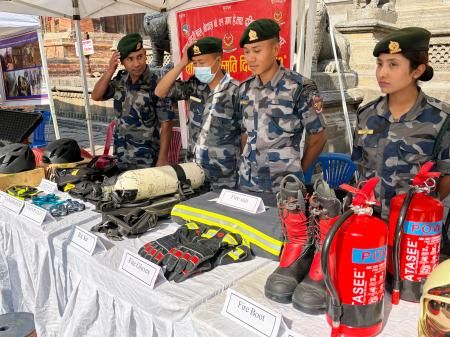Nepal Earthquake: Progress and Ongoing Challenges – Five Years On
The devastating 2015 Nepal earthquake, measuring 7.8 on the Richter scale, left an indelible mark on the nation. While significant progress has been made in rebuilding and recovery, substantial challenges persist. This article explores the advancements and ongoing hurdles faced by Nepal in its journey towards resilience.
Progress Made Since the 2015 Earthquake
Five years after the earthquake, Nepal has demonstrated remarkable resilience. Significant strides have been made in several key areas:
Housing Reconstruction:
- Increased pace of reconstruction: The government, aided by international organizations and NGOs, has accelerated the pace of housing reconstruction. Thousands of homes have been rebuilt, providing much-needed shelter to earthquake survivors. However, significant discrepancies remain in distribution and access to aid.
- Improved building codes: New building codes have been implemented, emphasizing earthquake-resistant construction techniques. This is crucial for long-term safety and disaster preparedness. Further education and enforcement of these codes are essential.
- Community-based initiatives: Community-led reconstruction efforts have been instrumental in ensuring culturally appropriate and sustainable rebuilding practices. This participatory approach empowers local communities and fosters ownership.
Infrastructure Development:
- Repaired roads and bridges: Vital transportation networks have been repaired and upgraded, improving connectivity and facilitating access to essential services, particularly in remote areas. However, maintaining these newly constructed roads and bridges in the face of future seismic activity remains a major concern.
- Improved healthcare facilities: Healthcare facilities damaged during the earthquake have been rebuilt or strengthened, enhancing the capacity of the healthcare system to cope with future emergencies. Further investment in medical equipment and personnel is necessary to meet the ongoing healthcare needs.
- Educational institutions rebuilt: Many schools damaged in the earthquake have been reconstructed, ensuring access to education for children. The focus now shifts towards improving the quality of education and providing inclusive learning environments.
Ongoing Challenges Facing Nepal
Despite notable progress, Nepal still confronts significant challenges:
Socio-economic Impacts:
- Persistent poverty and inequality: The earthquake exacerbated existing inequalities, leaving many vulnerable populations marginalized and struggling to recover. Addressing poverty and income disparity remains critical for long-term sustainable development.
- Trauma and mental health: The earthquake caused widespread trauma and mental health issues, impacting survivors' well-being and recovery. Access to mental health services remains limited, highlighting the urgent need for increased investment in this area.
- Loss of livelihoods: Many people lost their livelihoods due to the earthquake, leading to economic hardship and unemployment. Sustainable livelihood opportunities and vocational training are crucial for economic recovery.
Environmental Concerns:
- Landslide risks: The earthquake increased the risk of landslides, posing an ongoing threat to communities and infrastructure. Investing in early warning systems and land-use planning is essential for mitigating these risks.
- Water resource management: Damage to water infrastructure and increased sedimentation in rivers pose challenges to water resource management. Sustainable water management strategies are necessary to ensure access to clean water and sanitation.
- Biodiversity loss: The earthquake affected biodiversity, impacting fragile ecosystems. Conservation efforts are essential to preserve Nepal's rich natural heritage.
Looking Ahead: Strengthening Resilience
Nepal's journey to recovery from the 2015 earthquake is a testament to its resilience. However, continued efforts are needed to address the remaining challenges and build a more resilient nation. This requires:
- Continued international support: Continued financial and technical assistance from international organizations and donor countries is essential.
- Strengthened governance and transparency: Effective governance and transparency are critical for ensuring that aid is used effectively and reaches those most in need.
- Community engagement: Empowering communities to participate in the recovery and reconstruction process is crucial for long-term success.
The 2015 Nepal earthquake was a devastating event, but it also provided an opportunity for Nepal to build back better. By addressing the ongoing challenges and learning from past experiences, Nepal can build a more resilient and sustainable future. Further information on earthquake preparedness and relief efforts can be found through organizations like [link to relevant NGO or government website].
